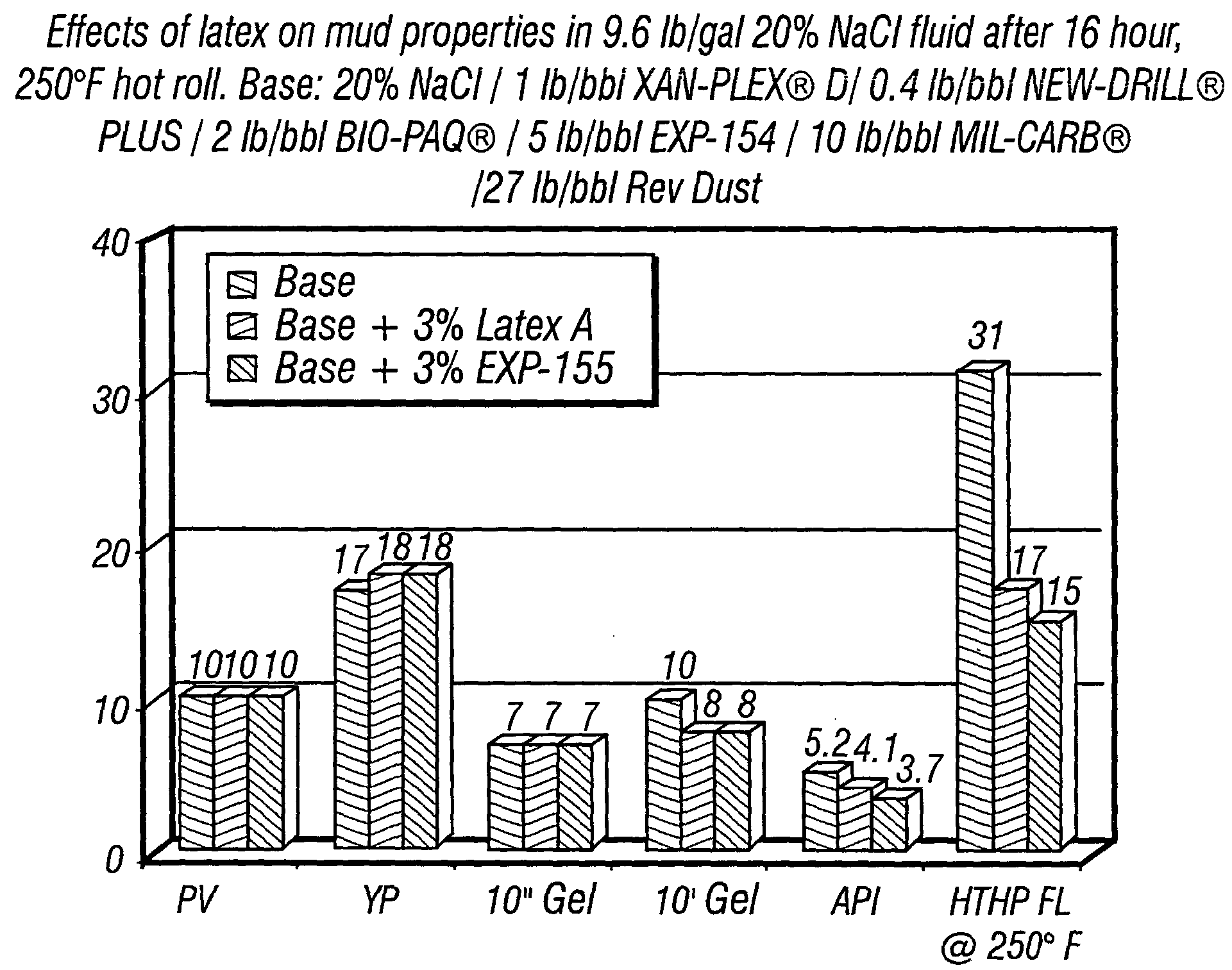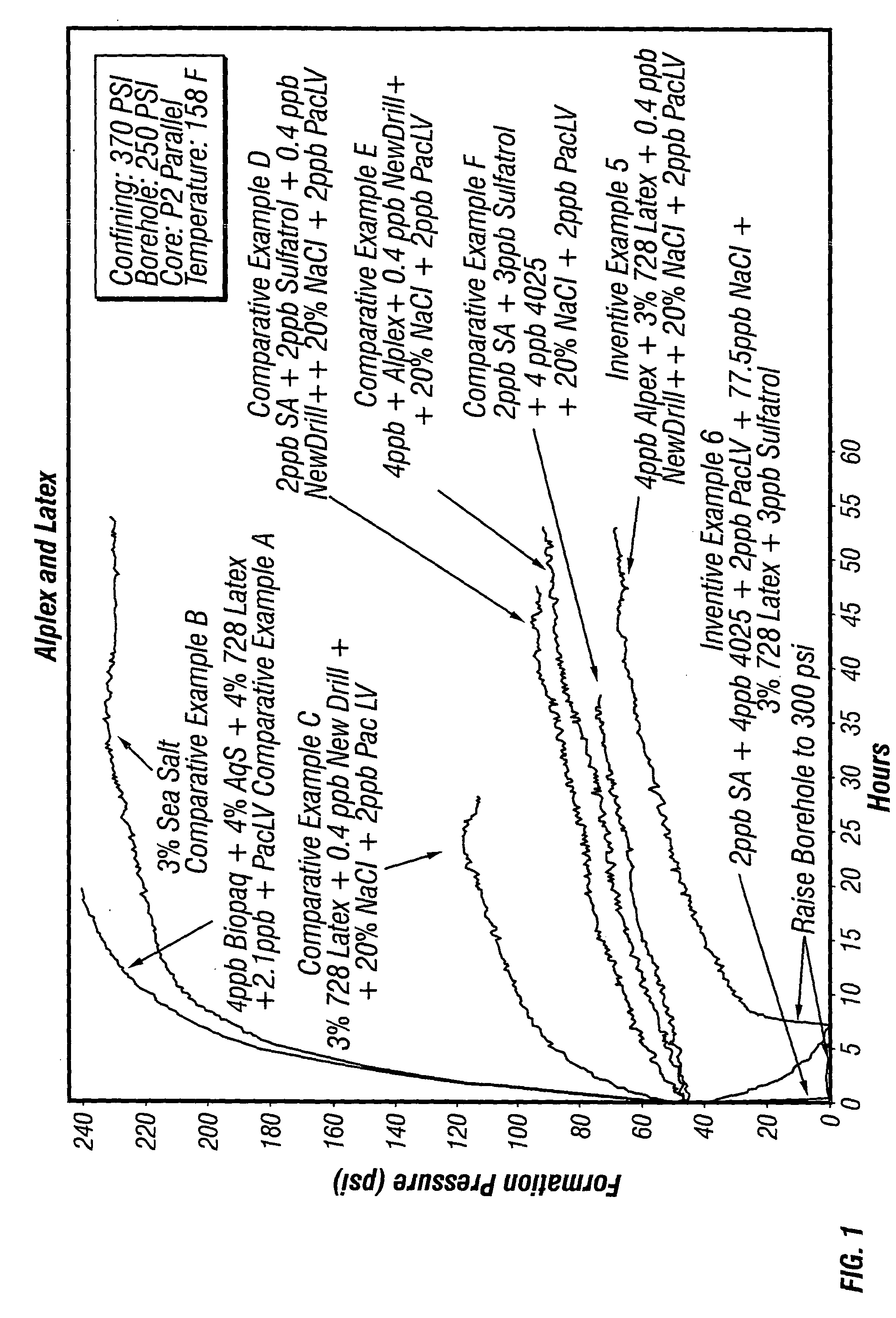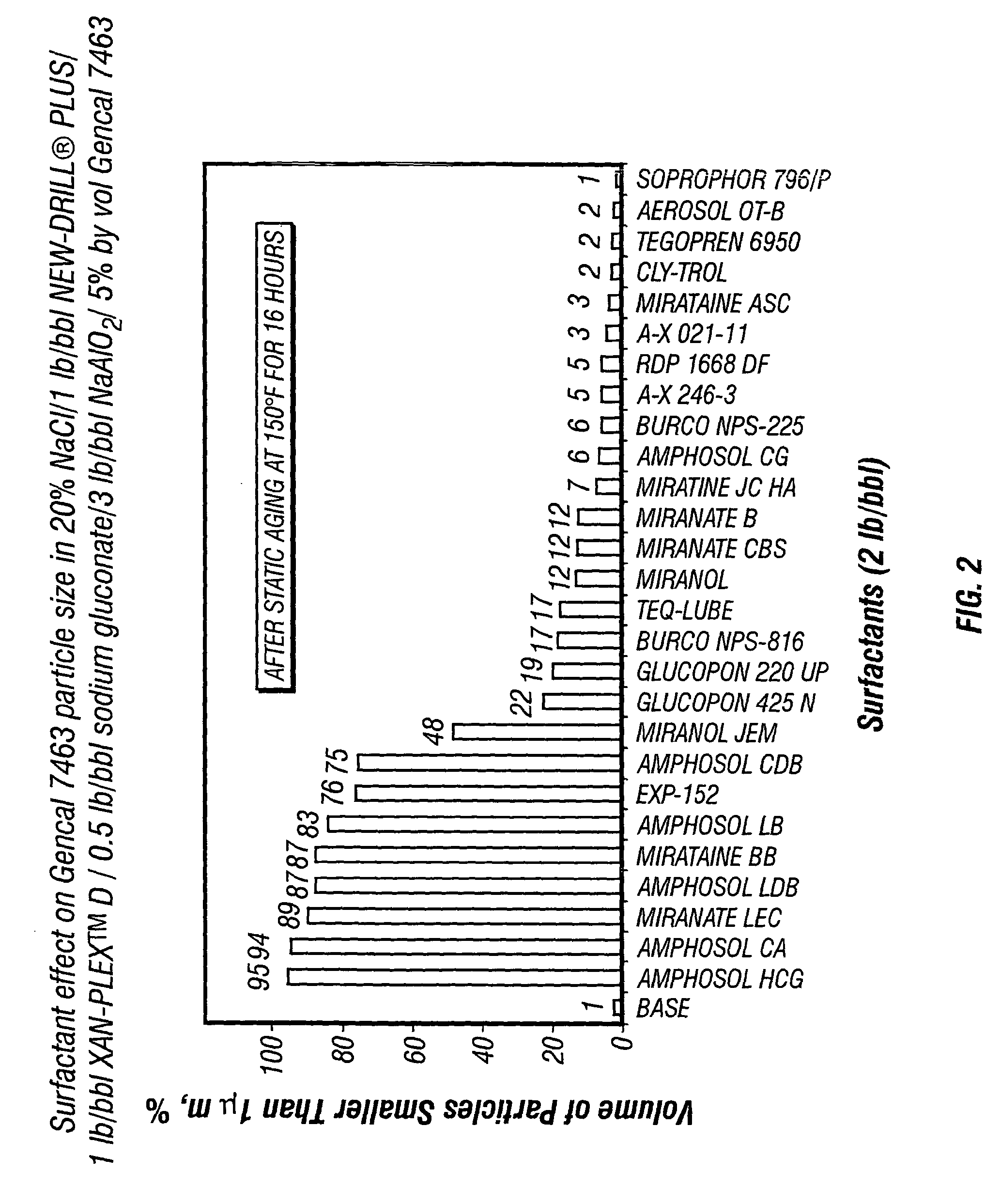Fluid loss control and sealing agent for drilling depleted sand formations
a technology of sand formations and fluids, applied in earth drilling, chemistry apparatus and processes, wellbore/well accessories, etc., can solve the problems of shale no longer supporting, pore pressure increase and swelling, and easy breakage and fall, softening and losing structural strength
- Summary
- Abstract
- Description
- Claims
- Application Information
AI Technical Summary
Benefits of technology
Problems solved by technology
Method used
Image
Examples
example 1
Fluid Intermediate Preparation
[0041]The following Example is the first preparation of the intermediate compositions of this invention. Unless otherwise noted, the latex in the Examples is 728 Latex, a polyvinylacetate latex.
[0042]
ComponentGrams per barrelGrams per 7 barrelsTap water3102170Sodium aluminate2 14LIGCO2 14AIRFLEX 72810.573.5 (75 cc)
The mixture was hot rolled. After 6 days, the pH was 11.51. The bottom of the jar was about 75% covered with 1 / 32″ fines. The following components were then added, again given in gram proportions for a single barrel and 7 barrels, respectively:
[0043]
NEWDRILL PLUS0.42.8NaCl (20%)77.5540MILPAC LV214
The fluid with the latex and the NEWDRILL+ had a light brown color. LD8 was added to control foaming. The resulting mixture was hot rolled for four hours at 150° F. The final pH was 10.75.
example 2
Shale Pressure Penetration Determination
[0044]The pore pressure transmission (PPT) device is based on a 1500 psi Hassler cell designed for 2.5 cm diameter core plugs from 2.5 cm to 7.5 cm in length. A Hassler cell is a cylinder with a piston inserted in each end. The core is held between the two pistons. A rubber sleeve is placed around the core and the pistons to seal around the core and prevent flow around the core. The outside of the sleeve is pressured to make a good seal. These tests use a core 25 mm in diameter and 25 mm long.
[0045]The low pressure side of the core (formation side) is fitted with a 1 liter, 2000 psi., stainless steel accumulator to provide back pressure. The high pressure side of the core is connected to two similar accumulators, one for pore fluid, and one for the test fluid. The pressure in each accumulator is controlled with a manual regulator fed by a 2200 psi nitrogen bottle.
[0046]All pressures are monitored with Heise transducers. The transducer pressure...
example 3
Fluid Intermediate Preparation—Proportions in Grams Unless Otherwise Noted
[0054]
ComponentPer barrelPer 7 barrelsTap water3102170 ccSodium aluminate214LIGCO214AIRFLEX 728 Latex10.5 75 ccNEWDRILL PLUS0.42.8NaCl (20%)77.5540MILPAC LV214
The sodium aluminate and AIRFLEX 728 latex were mixed together and allowed to stand over the weekend. The mixture was then hot rolled at 150° F. for two hours. The salt and polymers were then added. The sequence of addition to the sodium aluminate / latex mixture was: PHPA (partially hydrolyzed polyacrylamide; NEWDRILL PLUS), followed by mixing; then half of the salt, followed by MILPAC LV, followed by the other half of the salt. The mixture was hot rolled overnight.
PUM
| Property | Measurement | Unit |
|---|---|---|
| size | aaaaa | aaaaa |
| size distribution | aaaaa | aaaaa |
| size | aaaaa | aaaaa |
Abstract
Description
Claims
Application Information
 Login to View More
Login to View More - R&D
- Intellectual Property
- Life Sciences
- Materials
- Tech Scout
- Unparalleled Data Quality
- Higher Quality Content
- 60% Fewer Hallucinations
Browse by: Latest US Patents, China's latest patents, Technical Efficacy Thesaurus, Application Domain, Technology Topic, Popular Technical Reports.
© 2025 PatSnap. All rights reserved.Legal|Privacy policy|Modern Slavery Act Transparency Statement|Sitemap|About US| Contact US: help@patsnap.com



